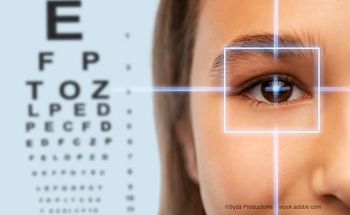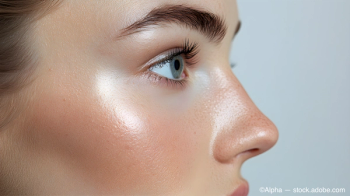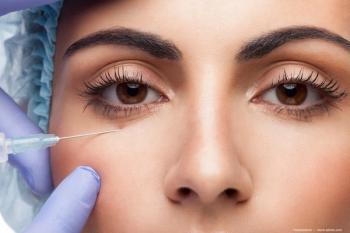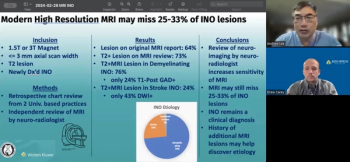
The role of IPL in OSD treatment
Eradicating Demodex helps keep the ocular microbiome healthy
Editor’s Note: Welcome to “
Regardless of the root cause, as the cornea becomes increasingly irritated it further dries out and normal function deteriorates. Tear production becomes compromised and
Breaking it down: MGD and rosacea
Commonly, patients have DED in combination with
RELATED:
The mechanism, although not entirely clear, appears to be caused by the reduction of telangietic blood vessels that supply inflammatory factors to the eye. When these pathways are closed, the inflammatory cycle is reduced. In the aesthetic/cosmetic world, IPL has been long known to improve OSD symptoms in facial rosacea patients.
Deeper in the ocular microbiome
IPL has been shown to dramatically reduce Demodex when studied via
IPL protocol
In my practice, I take a comprehensive “holistic” approach to OSD. I consider everything from the gut microbiome-recommending an anti-inflammatory diet (e.g., omega-3 supplementation)-to devices like IPL and manual expression of the glands to prescription drops to scleral contact lenses for crippling disease.
RELATED:
My IPL protocol using the
Then, I perform manual expression with forceps and grade every single glad. I will use
Conclusion
Patient selection is key for a successful IPL-based treatment. It is indicated for those who clearly have MGD, with evidence of facial and/or lid rosacea. In my experience, for these patients, there is no other technique that can rival IPL.
RELATED:
Disclosures:
Harvey A. Fishman, MD, PhD
P: 650-322-4393
Dr. Fishman is the medical director, founder and head of Cataract Service and Advanced Diagnostics and Therapeutics at Fishman Vision, Santa Cruz, CA. He is a consultant to Lumenis and 23&me, receives clinical funding from EyeDetec, is a non-paid medical advisory board member of MiboMedical, and co-founder EyeCareLIve.
References:
1. Craig JP1, Nichols KK2, Akpek EK, et al. TFOS DEWS II Definition and Classification Report. Ocul Surf. 2017;15:276-283. doi: 10.1016/j.jtos.2017.05.008.
2. Lemp MA, Crews LA, Bron AJ, Foulks GN, Sullivan BD. Distribution of aqueous-deficient and evaporative dry eye in a clinic-based patient cohort: a retrospective study. Cornea. 2012;31:472-478. doi: 10.1097/ICO.0b013e318225415a.
3. Dell SJ. Intense pulsed light for evaporative dry eye disease. Clin Ophthalmol. 2017;11:1167-1173. doi: 10.2147/OPTH.S139894.
4. Geerling G, Baudouin C, Aragona P, et al. Emerging strategies for the diagnosis and treatment of meibomian gland dysfunction: Proceedings of the OCEAN group meeting. Ocul Surf. 2017;15:179-192. doi: 10.1016/j.jtos.2017.01.006.
5. Vigo L, Giannaccare G, Sebastiani S, et al. Intense Pulsed light for the treatment of dry eye owing to meibomian gland dysfunction. J Vis Exp. 2019;1(146). doi: 10.3791/57811.
6. Toyos R, McGill W, Briscoe D. Intense pulsed light treatment for dry eye disease due to meibomian gland dysfunction: a 3-year retrospective study. Photomed Laser Surg. 2015;33(1):41-46.
7. Viso E, Clemente MillaÌn A, RodriÌguez-Ares MT. Rosacea-associated meibomian gland dysfunction-an epidemiological perspective. European Ophthalmic Review. 2014;8(1):13-16.
8. Byun JY, Choi HY, Myung KB, Choi YW. Expression of IL-10, TGF-beta(1) and TNF-alpha in cultured keratinocytes (HaCaT Cells) after IPL treatment or ALA-IPL photodynamic treatment. Ann Dermatol. 2009;21(1):12-17.
9. Lee SY, Park KH, Choi JW, et al. A prospective, randomized, placebo-controlled, double-blinded, and split-face clinical study on LED phototherapy for skin rejuvenation: clinical, profilometric, histologic, ultrastructural, and biochemical evaluations and comparison of three different treatment settings. J Photochem Photobiol B. 2007;88(1):51-67.
10. Prieto VG, Sadick NS, Lloreta J, et al. Effects of intense pulsed light on sun-damaged human skin, routine, and ultrastructural analysis. Lasers Surg Med. 2002;30(2):82-85.
11. Karu T. Primary and secondary mechanisms of action of visible to near-IR radiation on cells. J Photochem Photobiol B. 1999;49(1):1-17.
12. Farivar S, Malekshahabi T, Shiari R. Biological effects of low level laser therapy. J Lasers Med Sci. 2014;5(2):58-62.
13. Gupta PK, Vora GK, Matossian C, et al. Outcomes of intense pulsed light therapy for treatment of evaporative dry eye disease. Can J Ophthalmol. 2016;51(4):249-253.
14. Zhang X, Song N, Gong L. Therapeutic Effect of Intense Pulsed Light on Ocular Demodicosis. Curr Eye Res. 2019;44(3):250-256. doi:10.1080/02713683.2018.1536217.
15. Fromstein SR, Harthan JS, Patel J, Opitz DL. Demodex blepharitis: clinical perspectives. Clin Optom (Auckl). 2018; 10: 57–63. doi: 10.2147/OPTO.S142708
16. Marilyn T Wan1 and Jennifer Y Lin2. Current evidence and applications of photodynamic therapy in dermatology. Clin Cosmet Investig Dermatol. 2014; 7: 145–163. doi: 10.2147/CCID.S35334
17. Zhu M, Cheng C, Yi H, et al. Quantitative Analysis of the Bacteria in Blepharitis With Demodex Infestation. Front Microbiol. 2018; 9: 1719. doi: 10.3389/fmicb.2018.01719
Newsletter
Don’t miss out—get Ophthalmology Times updates on the latest clinical advancements and expert interviews, straight to your inbox.















































